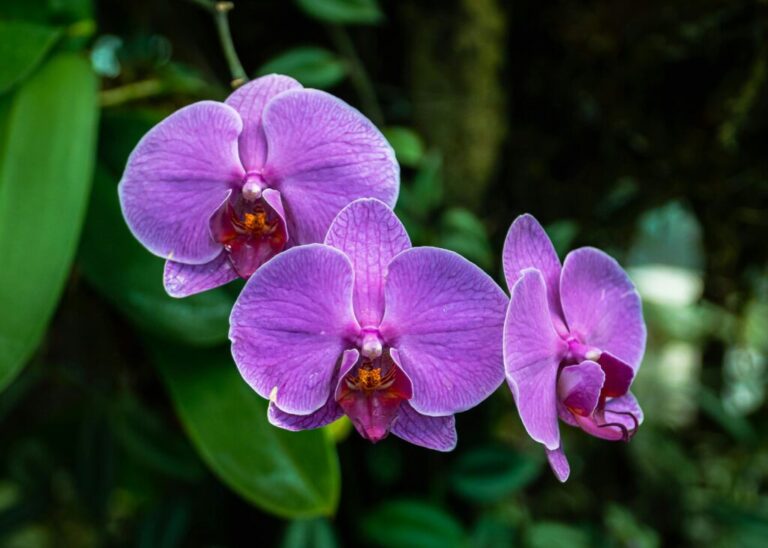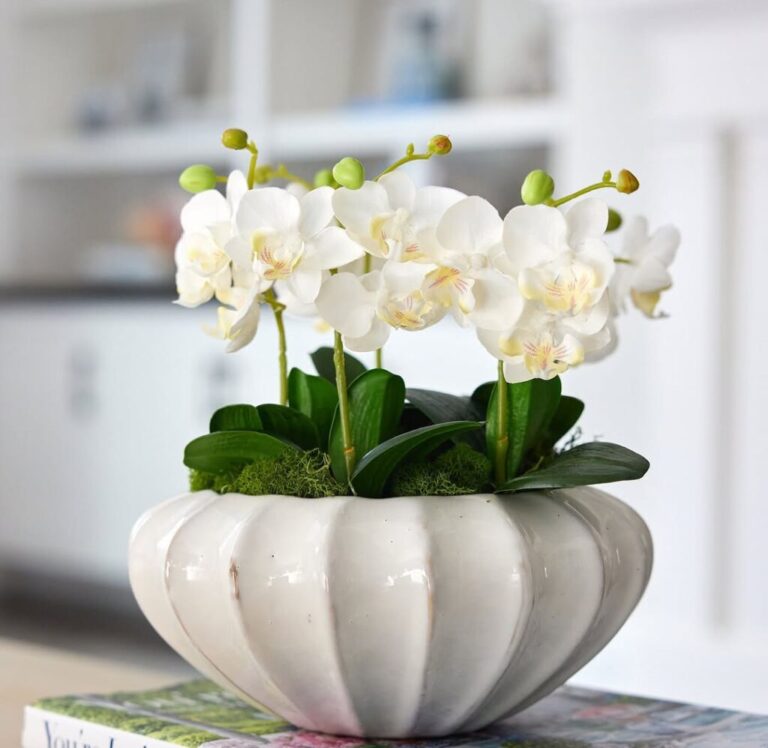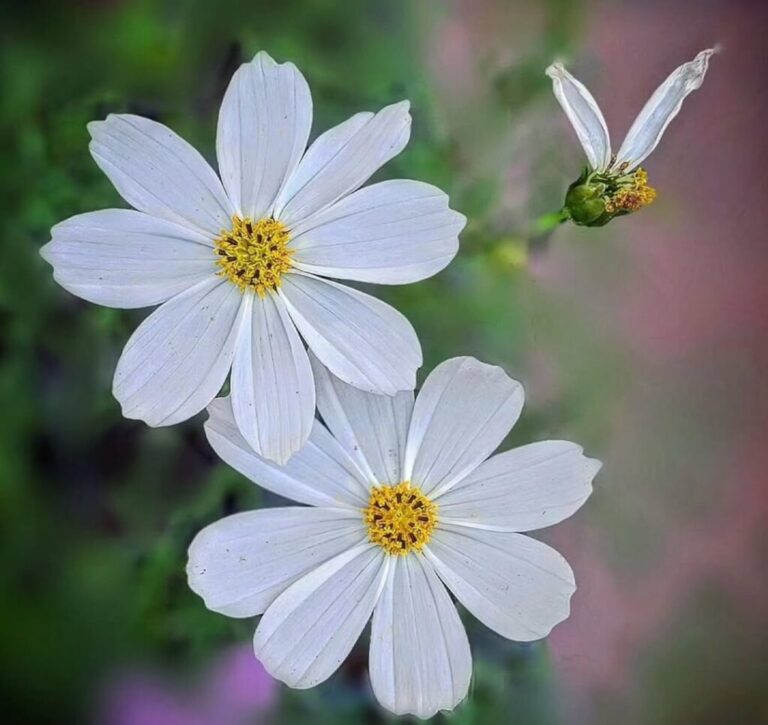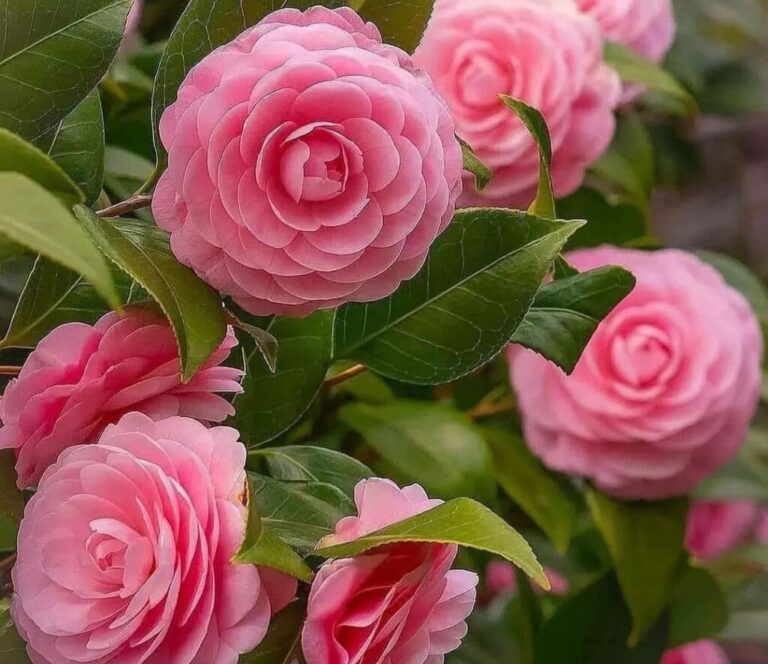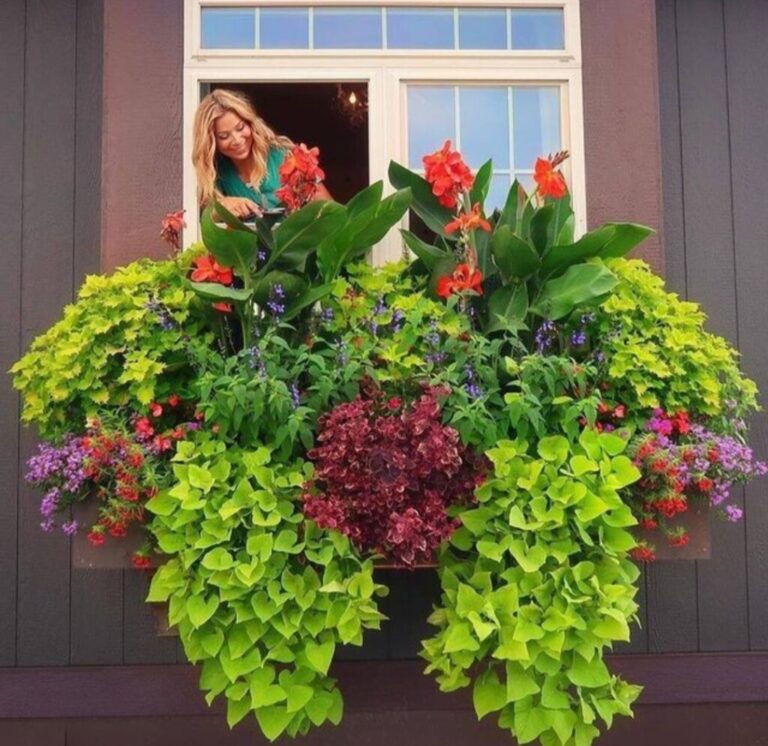Orchids are among the most captivating and elegant plants in the world, and hanging orchids take their beauty to another level. Whether displayed in baskets, mounted on driftwood, or suspended from ceiling hooks, these orchids thrive when grown in airy conditions that mimic their natural habitat. With the right care, you can cultivate breathtaking hanging orchids that not only enhance your indoor or outdoor space but also bloom profusely for years. Growing them in a suspended manner allows them to develop naturally, just as they would in the wild, where they attach themselves to tree branches and absorb nutrients from the air and rain.

- 1 Why Choose Hanging Orchids?
- 2 Best Types of Orchids for Hanging Displays
- 3 How to Grow Hanging Orchids Successfully
- 4 1. Choosing the Right Container or Mount
- 5 2. Providing Proper Light
- 6 3. Watering and Humidity Requirements
- 7 4. Fertilizing for Healthy Growth
- 8 5. Maintaining Temperature and Airflow
- 9 Common Problems and How to Fix Them
- 10 How to Prepare a Hanging Orchid Basket (Step by Step)
- 11 Hanging Orchids Care: Frequently Asked Questions
Why Choose Hanging Orchids?
Hanging orchids offer numerous benefits compared to traditional potted orchids. They improve air circulation, which reduces the risk of root rot and fungal infections, making them healthier and easier to care for in the long run. Additionally, they mimic the natural growing conditions of epiphytic orchids, which grow on trees rather than in soil. These plants create stunning decorative displays with cascading flowers that add a touch of elegance and sophistication to any space. Hanging orchids also require less space, making them ideal for small homes, apartments, and balconies where traditional potted plants might take up too much room.

Best Types of Orchids for Hanging Displays
While many orchids can be grown in hanging arrangements, some species and hybrids perform exceptionally well. Here are a few popular choices:
Vanda Orchids – Known for their vibrant, long-lasting blooms and aerial roots, Vandas thrive in hanging baskets with minimal potting media, allowing their roots to breathe and absorb moisture from the air. These orchids require bright light and high humidity to flourish.
Dendrobium Orchids – These orchids produce tall, arching canes and look stunning when suspended in wire baskets or wooden mounts. They are relatively low-maintenance and reward growers with abundant flowers in the right conditions.
Oncidium Orchids – Often called “Dancing Lady” orchids, Oncidiums flourish in hanging environments, offering bright, cheerful flowers that sway in the breeze, making them a lively and delightful addition to any space.
Cattleya Orchids – With large, fragrant flowers, Cattleyas adapt well to mounted or hanging culture, given adequate humidity and light. Their dramatic blossoms make them a favorite among orchid enthusiasts.
Phalaenopsis Orchids – The ever-popular moth orchid can also be grown in hanging setups, producing cascading flower spikes that create a breathtaking waterfall effect, adding elegance to any indoor or outdoor setting.
Miltoniopsis, or pansy orchids, thrive in cool temperatures, high humidity, and indirect light. They need moist, well-draining soil, regular fertilization, and good airflow to produce stunning, long-lasting blooms.
Timetable for Hanging Orchid Care
| Care Activity | Frequency | Best Practice |
|---|---|---|
| Watering | 2–3 times a week (adjust based on climate) | Use a spray bottle or dunk method to prevent dehydration. |
| Fertilizing | Weekly (diluted orchid fertilizer) | Apply a balanced 20-20-20 fertilizer at 1/4 strength. |
| Light Exposure | Daily | Provide bright, indirect light or filtered sunlight. |
| Air Circulation | Continuous | Ensure good airflow to prevent fungal infections. |
| Repotting or Basket Refresh | Every 1–2 years | Change the sphagnum moss or bark to prevent root rot. |
| Pest Check | Weekly | Inspect for pests like spider mites and treat immediately. |
| Pruning & Grooming | Monthly | Trim dead roots or leaves to encourage healthy growth. |
How to Grow Hanging Orchids Successfully
1. Choosing the Right Container or Mount
Hanging orchids require a setup that provides excellent drainage and airflow. The most common choices include wire baskets filled with coarse bark or coconut husk, which allow roots to spread and breathe easily. Wooden slat baskets are another great option, offering a natural, rustic look while enabling free root growth. Some growers prefer mounting their orchids on driftwood or cork for a more artistic display, allowing the plant to take on an organic, sculptural appearance. Plastic hanging pots with slits can also be used, encouraging air movement and preventing excess moisture buildup around the roots.
2. Providing Proper Light
Most hanging orchids prefer bright, indirect light to grow and bloom successfully. East- or south-facing windows are ideal for indoor setups, offering the right balance of light without direct exposure that could scorch the leaves. If growing outdoors, place orchids under shaded areas such as a tree canopy or a patio cover to prevent sunburn. Insufficient light can lead to weak growth and a lack of flowering, so monitoring the light intensity is crucial.
3. Watering and Humidity Requirements
Orchids grown in hanging baskets or mounts dry out faster than those in pots due to increased airflow. To keep them hydrated, water daily in warm weather, ensuring that the roots are thoroughly soaked before allowing them to dry out between waterings. Reduce watering in cooler months to prevent rot. Misting the roots frequently is beneficial if humidity levels are low, as orchids absorb moisture from the air. Using rainwater or distilled water prevents mineral buildup, which can affect plant health over time.
4. Fertilizing for Healthy Growth
Feed your hanging orchids with a balanced orchid fertilizer every two weeks during active growth to ensure strong, vibrant blooms. A diluted 20-20-20 formula or a specialized orchid fertilizer works best for promoting robust root development and flower production. Reduce feeding in winter when growth naturally slows. Regular feeding ensures that orchids receive the nutrients they need to thrive, particularly when grown in minimal potting media.
5. Maintaining Temperature and Airflow
Hanging orchids thrive in temperatures between 65-85°F (18-29°C), making them adaptable to most home environments. However, it’s essential to provide adequate airflow to prevent fungal infections and encourage strong root growth. Placing a fan near indoor orchids or ensuring natural ventilation outdoors helps keep them healthy. A temperature drop at night can also stimulate blooming in many orchid species, so maintaining a slightly cooler nighttime environment can encourage flowering.
Common Problems and How to Fix Them
Wrinkled or Dry Roots? Increase humidity and water more frequently, ensuring roots do not stay dry for extended periods.
Yellowing Leaves? Adjust light exposure; too much direct sun can scorch leaves, while too little can result in weak, leggy growth.
No Blooms? Provide a temperature drop at night and ensure the plant receives enough light and nutrients to encourage flowering.
Mold or Rot? Improve airflow and avoid overwatering, making sure excess moisture drains away properly to prevent fungal issues.
How to Prepare a Hanging Orchid Basket (Step by Step)
Hanging orchids thrive in well-ventilated baskets that allow their roots to grow freely. Follow these steps to prepare a perfect hanging orchid basket:
Step 1: Choose the Right Basket
Use a wooden slatted basket, wire basket, or coconut fiber-lined basket for good airflow.
Ensure the basket has enough drainage holes to prevent water retention.
Step 2: Select the Right Lining (Optional)
For fine-rooted orchids (like Oncidium or Miltoniopsis), line the basket with sphagnum moss to retain moisture.
For thick-rooted orchids (like Vanda or Cattleya), leave the basket unlined for better airflow.
Step 3: Prepare the Potting Medium
Use bark, charcoal, sphagnum moss, perlite, or a combination depending on the orchid type.
For Vanda orchids, no medium is needed as they prefer bare-root hanging.
Step 4: Position the Orchid
Gently spread the orchid’s roots inside the basket.
If the plant is top-heavy, secure it with soft ties or clips to keep it stable.
Step 5: Fill the Basket with Medium
Add the prepared medium around the roots, ensuring they are not buried too deep.
Lightly press the medium in place without compacting it.
Step 6: Attach the Hanging Wires or Hooks
Use sturdy metal wires or a chain to hang the basket securely.
Ensure the basket hangs freely with good air circulation around it.
Step 7: Water and Place in a Suitable Location
Water thoroughly after planting.
Hang the basket in bright, indirect sunlight with good air movement (e.g., near a window, greenhouse, or shaded patio).
Growing hanging orchids is a rewarding experience that brings a unique aesthetic to your home or garden. With proper care, these stunning plants will flourish, producing breathtaking blooms that capture the essence of the tropics. Whether you’re a beginner or an experienced orchid enthusiast, hanging orchids offer an exciting way to elevate your plant collection. Their versatility, beauty, and natural elegance make them an excellent choice for anyone looking to expand their gardening skills and create a captivating botanical display.
Hanging Orchids Care: Frequently Asked Questions
What are the best orchid varieties for hanging baskets?
The best orchids for hanging baskets are Vanda, Cattleya, Dendrobium, and Oncidium. These orchids thrive in hanging conditions because they require excellent air circulation, minimal potting media, and ample light exposure. Their aerial root systems adapt well to baskets, allowing them to absorb moisture and nutrients efficiently from the air.
How do I water hanging orchids properly?
Hanging orchids need thorough watering, especially if they are grown without potting media. You can soak their roots in a bucket of water for 10–15 minutes or mist them daily, depending on humidity levels. Ensure proper drainage after watering to prevent root rot, which can be fatal for orchids in hanging baskets.
What type of basket or mount is best for hanging orchids?
The best baskets for hanging orchids are wooden slatted baskets, wire baskets lined with coconut fiber, or tree fern mounts. These materials allow for excellent drainage and aeration, preventing root rot. Orchids can also be mounted on cork or driftwood, mimicking their natural habitat where they grow attached to tree trunks.
How much sunlight do hanging orchids need?
Most hanging orchids require bright, indirect light to thrive. Vanda orchids, for example, prefer more sunlight and can tolerate a few hours of direct morning sun. On the other hand, orchids like Phalaenopsis and Oncidium need filtered light to avoid leaf burns. Adjust their placement according to their specific light needs.
Do hanging orchids need potting media?
Some orchids, like Vandas, can grow without any potting media, while others, such as Cattleya and Dendrobium, may need a mix of bark, coconut husk, or sphagnum moss. The type of media used depends on the orchid species and the surrounding humidity levels, ensuring that roots get enough moisture without being waterlogged.
How often should I fertilize my hanging orchids?
Hanging orchids need regular feeding to support healthy growth and blooming. Apply a balanced orchid fertilizer (20-20-20) at half-strength once a week. During the blooming season, switch to a high-phosphorus fertilizer (10-30-20) to encourage flower production. Always water before fertilizing to prevent root burn and ensure proper nutrient absorption.
Can I hang orchids indoors?
Yes, hanging orchids can thrive indoors if placed near a bright window or under artificial grow lights. East or south-facing windows are ideal locations. Ensure humidity levels remain between 50–70% by using a humidifier or placing a humidity tray underneath the plant. Good air circulation is also essential for preventing fungal infections.
How do I increase humidity for hanging orchids?
Maintaining adequate humidity is crucial for hanging orchids, especially in dry indoor environments. You can mist the roots daily, use a humidity tray filled with pebbles and water, or place the orchids near other plants to create a microclimate. In extreme dryness, a room humidifier can help maintain optimal moisture levels.
What is the best way to secure orchids in a hanging basket?
Orchids in hanging baskets need to be secured properly to prevent movement that could damage their roots. You can tie them with fishing line, orchid wire, or use sphagnum moss to hold the roots in place until they attach naturally. Over time, the roots will grip the basket or mount, securing the plant firmly.
What temperatures are ideal for hanging orchids?
Most orchids prefer daytime temperatures between 65–80°F (18–27°C) and slightly cooler nights. Avoid exposing them to extreme heat or cold, as sudden temperature changes can stress the plant and hinder blooming. If growing orchids outdoors, move them indoors during winter or use shade cloth to protect them from direct sunlight in summer
Should I prune hanging orchids?
Yes, regular pruning helps keep hanging orchids healthy and encourages new growth. Remove dead roots, spent flower spikes, and yellowing leaves using sterilized scissors. Trimming old flower spikes after blooming allows the plant to focus its energy on producing new roots and leaves, which is essential for long-term health and vigorous flowering.
Can I move my hanging orchids outside?
Hanging orchids can be placed outdoors in warm weather, but they need protection from direct afternoon sunlight, heavy rain, and strong winds. Choose a shaded area, such as under a tree or a pergola, where they receive filtered light. Gradually acclimate them to outdoor conditions to prevent stress or sunburn.
Do hanging orchids need repotting?
Hanging orchids generally do not need frequent repotting unless their mounting material breaks down or the plant outgrows its basket. Vandas and other epiphytic orchids can remain in the same hanging setup for years. If repotting is necessary, do so during the growing season to minimize stress and encourage faster recovery.
How do I encourage my hanging orchids to bloom?
To promote blooming, provide the right balance of light, temperature, and nutrients. Most orchids need a slight drop in nighttime temperatures to trigger flowering. Regular fertilization, proper watering, and seasonal adjustments to light exposure also play key roles in getting hanging orchids to produce vibrant and long-lasting blooms.


